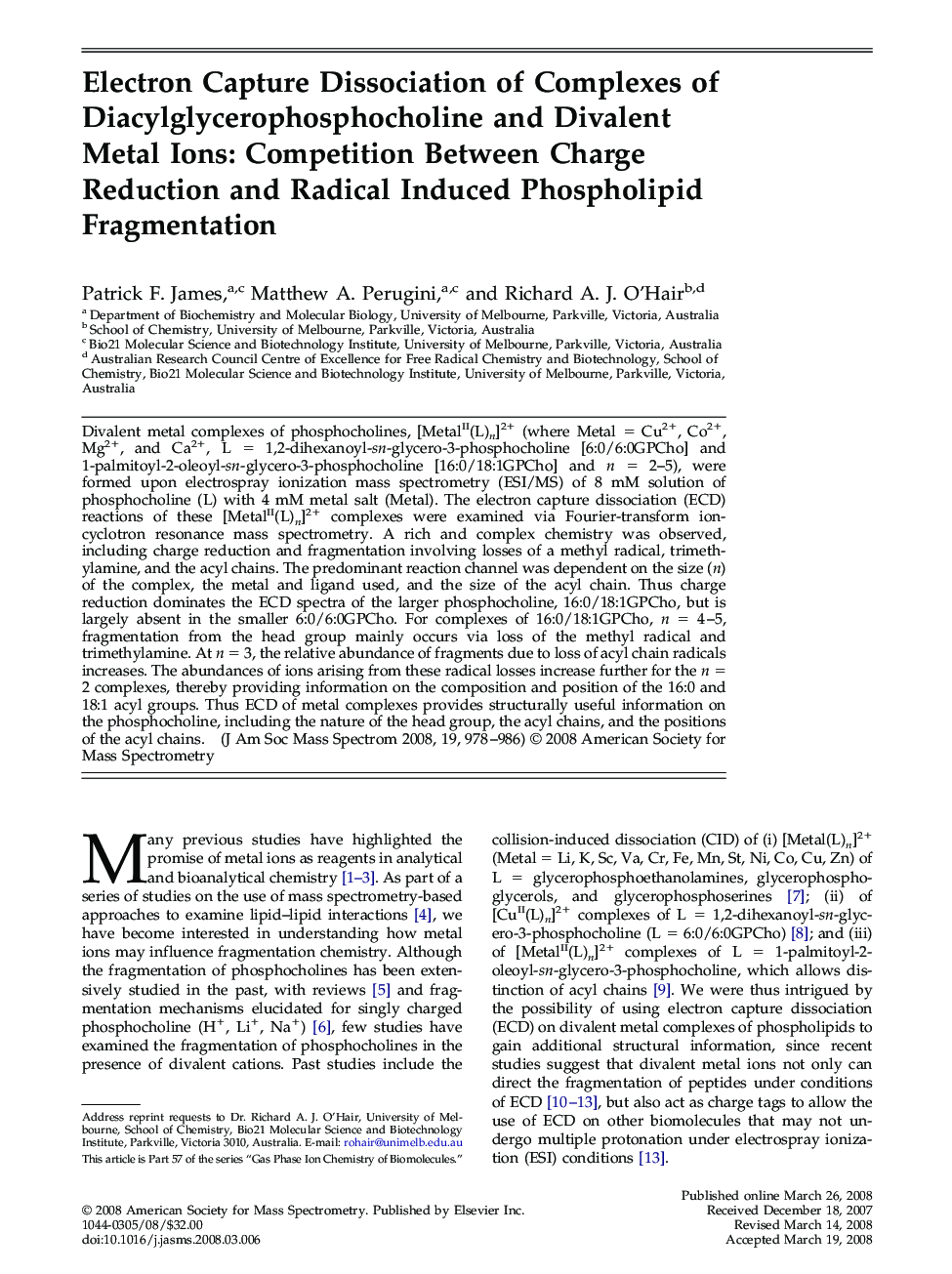| کد مقاله | کد نشریه | سال انتشار | مقاله انگلیسی | نسخه تمام متن |
|---|---|---|---|---|
| 1195318 | 964317 | 2008 | 9 صفحه PDF | دانلود رایگان |

Divalent metal complexes of phosphocholines, [MetalII(L)n]2+ (where Metal = Cu2+, Co2+, Mg2+, and Ca2+, L = 1,2-dihexanoyl-sn-glycero-3-phosphocholine [6:0/6:0GPCho] and 1-palmitoyl-2-oleoyl-sn-glycero-3-phosphocholine [16:0/18:1GPCho] and n = 2–5), were formed upon electrospray ionization mass spectrometry (ESI/MS) of 8 mM solution of phosphocholine (L) with 4 mM metal salt (Metal). The electron capture dissociation (ECD) reactions of these [MetalII(L)n]2+ complexes were examined via Fourier-transform ion-cyclotron resonance mass spectrometry. A rich and complex chemistry was observed, including charge reduction and fragmentation involving losses of a methyl radical, trimethylamine, and the acyl chains. The predominant reaction channel was dependent on the size (n) of the complex, the metal and ligand used, and the size of the acyl chain. Thus charge reduction dominates the ECD spectra of the larger phosphocholine, 16:0/18:1GPCho, but is largely absent in the smaller 6:0/6:0GPCho. For complexes of 16:0/18:1GPCho, n = 4–5, fragmentation from the head group mainly occurs via loss of the methyl radical and trimethylamine. At n = 3, the relative abundance of fragments due to loss of acyl chain radicals increases. The abundances of ions arising from these radical losses increase further for the n = 2 complexes, thereby providing information on the composition and position of the 16:0 and 18:1 acyl groups. Thus ECD of metal complexes provides structurally useful information on the phosphocholine, including the nature of the head group, the acyl chains, and the positions of the acyl chains.
Journal: Journal of the American Society for Mass Spectrometry - Volume 19, Issue 7, July 2008, Pages 978–986